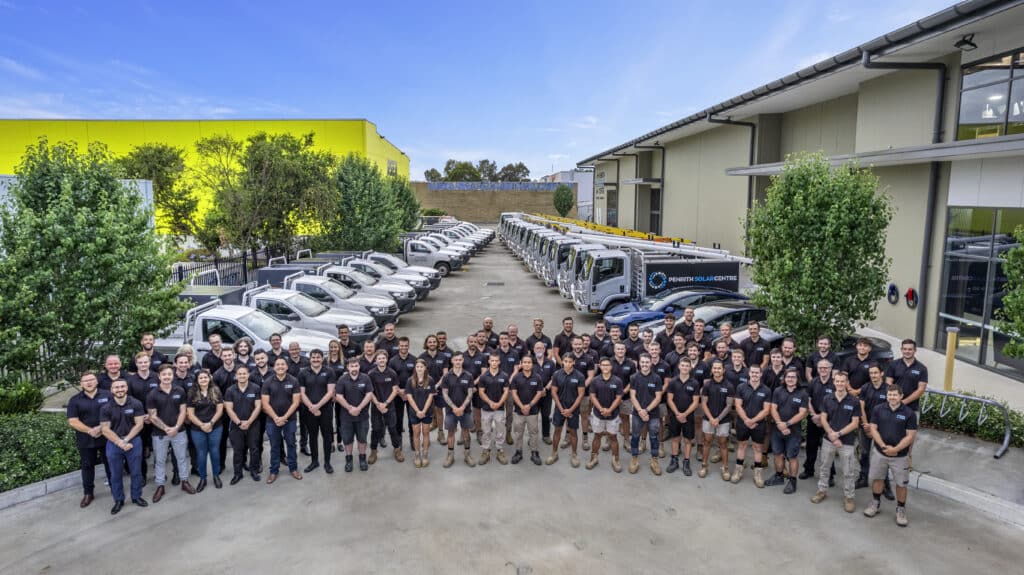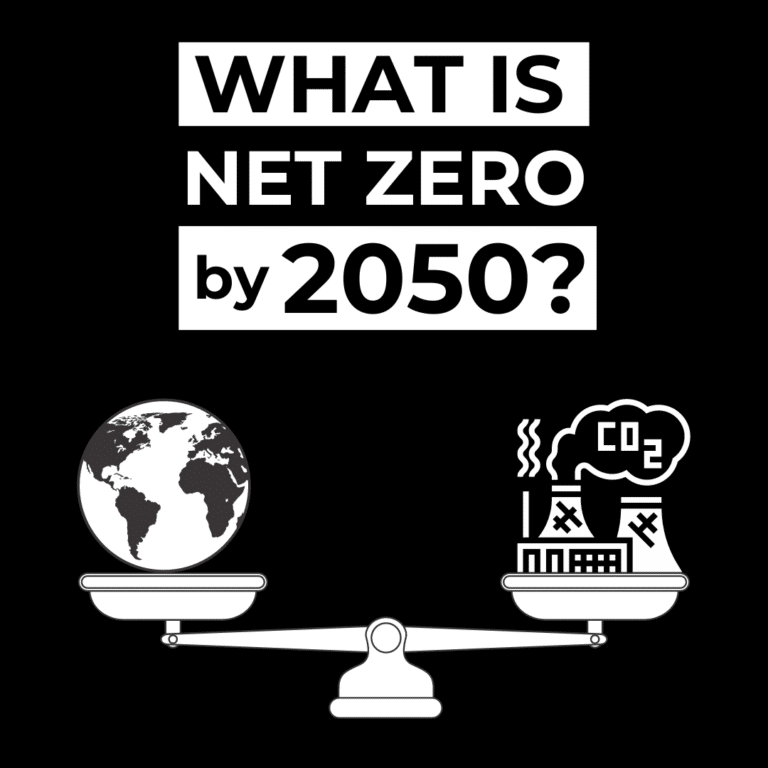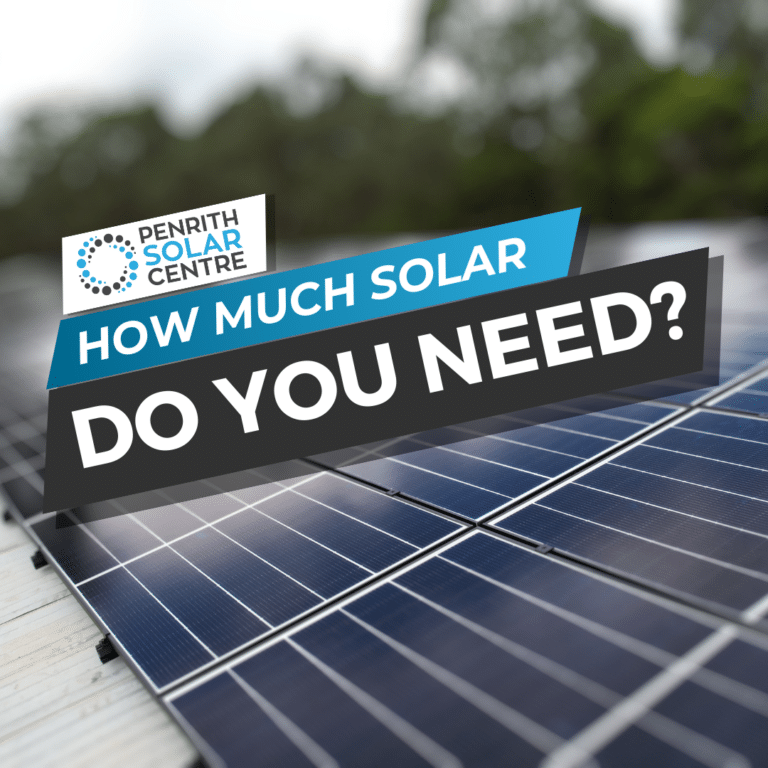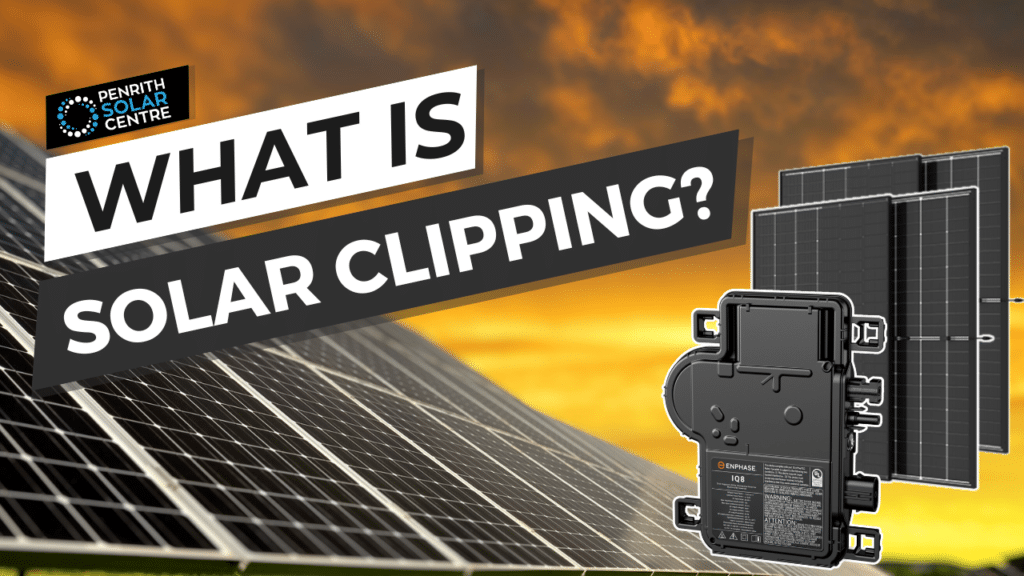
Just a little bit of curiosity about solar panels and their relationship to microinverters can lead you to some inconsistencies. Why are solar panels capable of outputting so much more power than microinverters can convert?
This is called “oversizing.” And once you go down the rabbit hole of learning what that is, the word “clipping” often pops up, but what does this term mean?
At Penrith Solar Centre, we know how confusing some of these solar vocabulary words can be. Concepts like oversizing and clipping might feel complex at first, but knowing about them will save you money, maximise your solar system, and help us reach Net Zero by 2050. We’re here to help you achieve these things.
In this article, you will learn:
- What is Oversizing in a Solar System?
- Why Would You Oversize Your Solar Panels?
- What is Clipping?
- Clipping in Microinverters vs. String Inverters
By the end of this article, you’ll be an expert in what clipping is and why you might not want to worry about it. Let’s dive in.
What is Oversizing in a Solar System?
The microinverter is a key component of a solar system. Each solar panel has a microinverter mounted beneath it.
The solar panel converts sunlight into DC (direct current) power. The microinverter converts the DC power into AC (alternating current) power which is sent to the home to power lights and appliances.
It’s common for the solar panel power rating to exceed that of the microinverter. This is what is meant by oversizing.
Solar panels never achieve 100% efficiency — which is normal — this is just where the technology is at. Microinverters need a minimum amount of power to function and are the most efficient between 18 – 58 volts.
With an Enphase microinverter system from Penrith Solar Centre, we install a 440W panel with a peak power output of 384W microinverter. This microinverter may not reach its maximum efficiency until midday. By oversizing the panel, it also makes the microinverter more efficient earlier in the day and later into the afternoon.
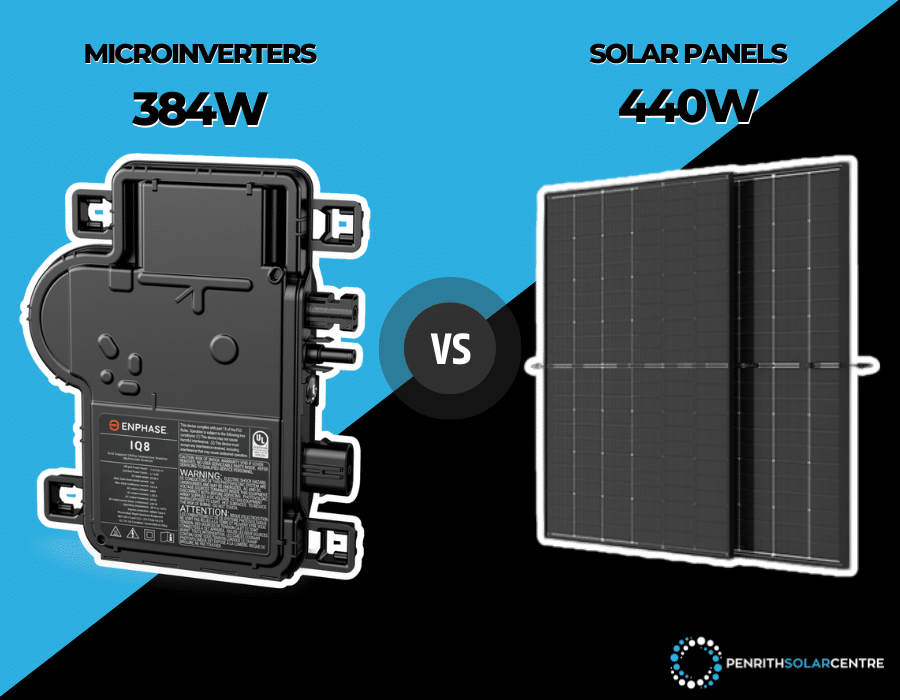
If you’re interested in learning more about oversizing, you might want to check out the following article titled, What Is Solar Oversizing In a Microinverter Solar System?
What is the 33% Rule When Oversizing Solar Panels?
All solar energy systems operate with a DC to AC ratio. In Australia, regulations set by the Clean Energy Council limit the oversizing of panels to 33%. Hypothetically, if you install a microinverter rated at 384W, then adhering to the 33% oversizing rule means that the maximum panel wattage compatible with this microinverter is 510W. As you can see, it’s well within the margin of 33%.
There are various factors that contribute to solar panel performance: tilt, orientation, temperature, shading, string lengths, wiring, and voltage conditions. Solar panels never achieve 100% efficiency. Even under ideal conditions, such as standard testing conditions during the panel’s wattage certification, they perform at their peak, and their actual performance will deviate.
Tilt and orientation play significant roles in determining a panel’s output. Additionally, shading, the length of strings or wiring from the inverter to the panel, and voltage conditions all contribute to potential output variations.
The microinverter typically maintains performance levels close to or exceeding their specified efficiency ratings, which often surpass 95% for most inverters.
Understanding these dynamics underscores the rationale behind opting for a larger panel size than the inverter. It provides a buffer against potential losses and ensures that your solar energy system operates optimally even under less-than-ideal conditions.
In summary, the 33% oversizing allowance is a strategic move that anticipates and mitigates the inevitable factors impacting solar panel performance. It’s a proactive approach that considers the real-world variables influencing solar energy systems, ultimately optimizing your investment for enhanced efficiency and reliability.
If you’re interested in learning a bit more about microinverters, you might want to check out the following article titled, Myths & Misconceptions About Solar Microinverters.
Why Would You Oversize Your Solar Panels?
Opting to oversize your solar system or matching larger panels to your inverter comes with some advantages. One of the main benefits is the increased likelihood of your system operating within the microinverter’s optimal performance range or “sweet spot.” This strategy ensures that your inverter is more consistently at its maximum power point, enhancing overall system efficiency.
At Penrith Solar, where 440W panels are paired with a 384W microinverter, we oversize our systems. If the panels were exactly the same size as the microinverter, reaching the inverter’s maximum power point might only occur around midday. However, by incorporating oversized panels, the microinverter can operate more efficiently from earlier in the day until later in the afternoon.
Now, it’s important to address a common concern: the misconception that having larger panels means exceeding the inverter’s wattage capacity. In reality, the panel won’t produce more than the microinverter’s specified capacity, which, in this case, is 384W. The instances where a panel operates at its full capacity are extremely limited, typically occurring for around four months on either side of Christmas in Australia and within the timeframe of 10 am to 2 pm. In the hours of the day during this time of year, losses are minimal, approximately around 4%.
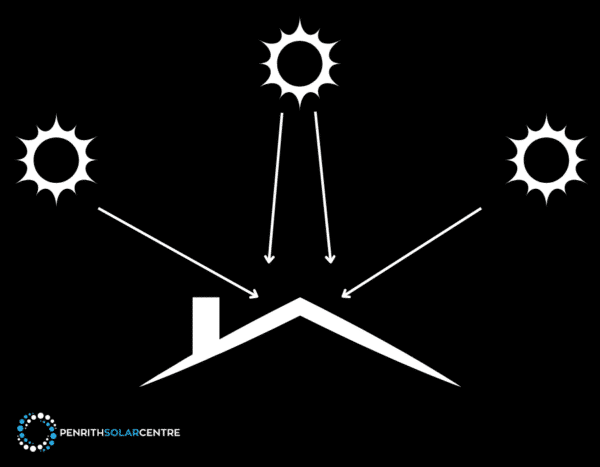
By oversizing the panels, the solar system gains energy during the morning and afternoon, which is when energy demands are often higher. This extra energy gained through oversizing is greater than the losses due to clipping. This strategy maximises the energy output of your solar system, ensuring that you receive more energy during crucial periods.
Oversizing the panels aim to maximise efficiency in various conditions. It prioritizes consistent performance and increased energy production during periods of heightened demand. This enhances the overall effectiveness of the solar installation.
If you’re interested in learning a bit more about solar panels, specifically the solar panels we install, you might want to check out the following article titled, Why We Install Trina Vertex S+ Solar Panels.
What is Clipping?
The phenomenon known as “clipping” refers to the energy potential that your panels could have generated but didn’t because your microinverter couldn’t handle that excess energy. Clipping is not exclusive to AC systems; it can also occur in DC systems.
With a 5kW string inverter paired with 6.6kW of panels, you have a 33% DC to AC ratio. Despite having a surplus in panel capacity, the string inverter (much like the microinverter) limits the energy output to its rated capacity of 5 kW at any given moment. The difference between 384W and 440W on a microinverter system – as discussed above – is less than 33%, and the same principle applies to string inverter systems. A lot of Australians prefer string solar systems for their price point.
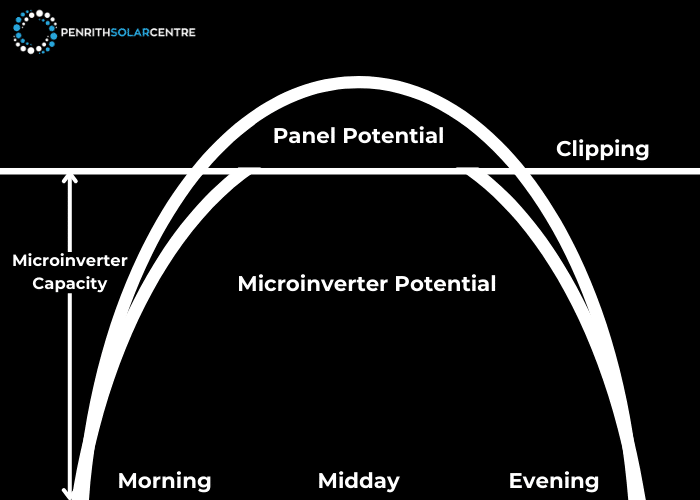
In a string inverter system, or even a microinverter system, it’s really uncommon to find the same-sized inverter paired with the same-sized panel. More often than not, solar installations involve oversizing panels relative to the inverter (or microinverter) capacity. This decision enhances system efficiency.
If you happen to come across a solar system where the microinverter and panel are perfectly matched in size, it’s worth mentioning that this system might not be as efficient as one where an oversized panel is paired with a microinverter.
Clipping in Microinverters vs. String Inverters
Let’s compare clipping in string inverters and microinverters.
Imagine the two setups side by side – one with a string inverter and the other with microinverters. We have 30 panels in each system, and each panel is rated at 440W, resulting in a total capacity of 13.2kW. Typically, you’d find a 10kW inverter matched with the string system.
With the microinverters, the total inverter capacity would be approximately 11.5kW, spread across 30 microinverters rated at 384W each. This extra inverter capacity is an advantage for microinverter systems. Even though microinverter systems might experience occasional clipping, the important point is that they clip at 11.5kW. That’s more than the 10kW limit of the string inverter system.

This advantage becomes bigger with larger systems, such as a 26.4kW setup, where microinverters convert nearly 22kW compared to the 20kW in the string inverter system. This higher inverter capacity translates to increased energy generation despite clipping.

It’s important to note that the discussion assumes all panels are facing the same direction and receiving the same amount of sunlight from the same angle. If panels are distributed, say with 15 panels on the west and 15 on the east, a slight advantage in clipping may be observed for the string inverter system.
For more information about how string solar systems compare to microinverter systems, you might want to read the following article titled, String Inverters vs Microinverters vs DC Optimiser: How Are They Different?
Clipping and You: Final Thoughts
Now that you understand what clipping is in relation to oversizing, you’ll be able to ask the right questions when you’re ready to map out your solar system with a Clean Energy Council certified installer.
Clipping really isn’t going to result in massive energy losses for your system, but it’s a good thing to be aware of – especially if you’re attentive to your consumption monitoring.
At Penrith Solar Centre, we want your solar system to reach its full potential. We’re here to guide you through the ins and outs of solar installations. We want to save you money by maximising your system’s efficiency.
In this article, we chatted quite a bit about the differences between microinverters and string inverters. If you’re interested in learning more about how these two components compare, you might want to check out the following article titled, Microinverters vs. String Inverters: An Honest Comparison.
